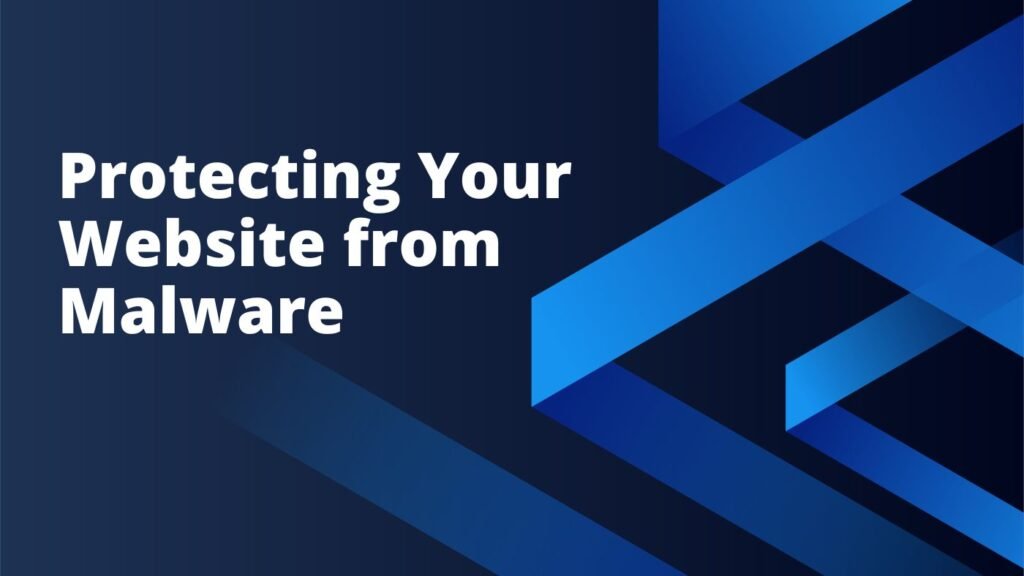In the digital age, owning and operating a website is crucial for business and personal pursuits. Yet, this necessity exposes us to cybersecurity threats such as malware. Malware, short for “malicious software,” includes viruses, worms, ransomware, spyware, and more. They can severely harm your website, compromising data integrity, slowing down site speed, or even causing a total shutdown. Thus, ensuring your website is safeguarded against these threats is of paramount importance.
Understanding the Threat
Malware can penetrate your website through various channels: weak passwords, outdated software, insecure web hosting, user errors, and third-party applications. They could be designed to steal sensitive data, disrupt your website’s operations, or transform your site into a hub for illegal activities without your knowledge.
Step 1: Utilize a Secure Hosting Platform
The first step in protecting your website from malware begins with selecting a secure hosting platform. A good hosting provider offers robust security features, including SSL certificates, DDoS protection, firewall protection, and regular system updates. Ensure your hosting platform also provides support for dealing with malware attacks.
Step 2: Regular Updates and Patches
Outdated software, plugins, and themes serve as easy entry points for malware. Regularly update your website’s content management system (CMS), and any plugins or themes you’ve installed. These updates often include patches for recent security vulnerabilities that could be exploited by cybercriminals.
Step 3: Strong Password Policies
Enforcing strong password policies is a simple, yet effective, defense against malware attacks. Encourage the use of complex, unique passwords that include a mix of letters, numbers, and special characters. Two-factor authentication (2FA) adds an extra layer of security by requiring a second piece of information to access the account.
Step 4: Use of HTTPS
HTTPS, the secure version of HTTP, encrypts the data transferred between a user’s browser and your website, preventing it from being intercepted or tampered with. A website with an SSL certificate (visible as HTTPS in the address bar) not only assures your visitors of their data’s safety but is also favored by Google’s search algorithm.
Step 5: Regular Backups
Regular backups of your website are vital. In the event of a malware attack, a backup allows you to restore your site to its state before the breach. Depending on your website’s activity, determine a suitable backup frequency – daily, weekly, or monthly.
Step 6: Use a Web Application Firewall (WAF)
A Web Application Firewall (WAF) provides an additional security layer by filtering the traffic between the data connection and the web server. It helps protect your website from SQL injection attacks, cross-site scripting (XSS), and other common threats.
Step 7: Monitoring and Scanning
Regularly monitor your website for unusual activities. Invest in a reliable security tool that scans for malware. Early detection of a malware attack can minimize damage and facilitate prompt remediation.
Step 8: Limit File Uploads
Allowing users to upload files to your website can present a significant security risk as any file uploaded, however innocuous on the surface, could contain a script that when executed on your server, opens up your website to a cyberattack. If your website needs to allow file uploads, use a secure server for the uploads, and run a proper security check on the files before they are linked to your main server.
Step 9: Educate Your Team
Often, user error can lead to a malware infection. Therefore, it’s crucial to train your team about basic security practices, like not clicking on suspicious links and recognizing phishing attempts.
Step 10: Develop an Incident Response Plan
Despite all precautions, a malware attack may still occur. An Incident Response Plan (IRP) is a structured approach to handling such breaches. Your IRP should detail steps to identify the breach, contain the damage, eradicate the malware, recover from the attack, and lessons learned.
In conclusion, while the internet provides vast opportunities, it also exposes us to significant threats. Website malware can result in considerable financial and reputational damage. Therefore, we must be proactive in protecting our websites from such cyber threats by incorporating robust security measures. Remember, when it comes to cybersecurity, prevention is always better than cure.

